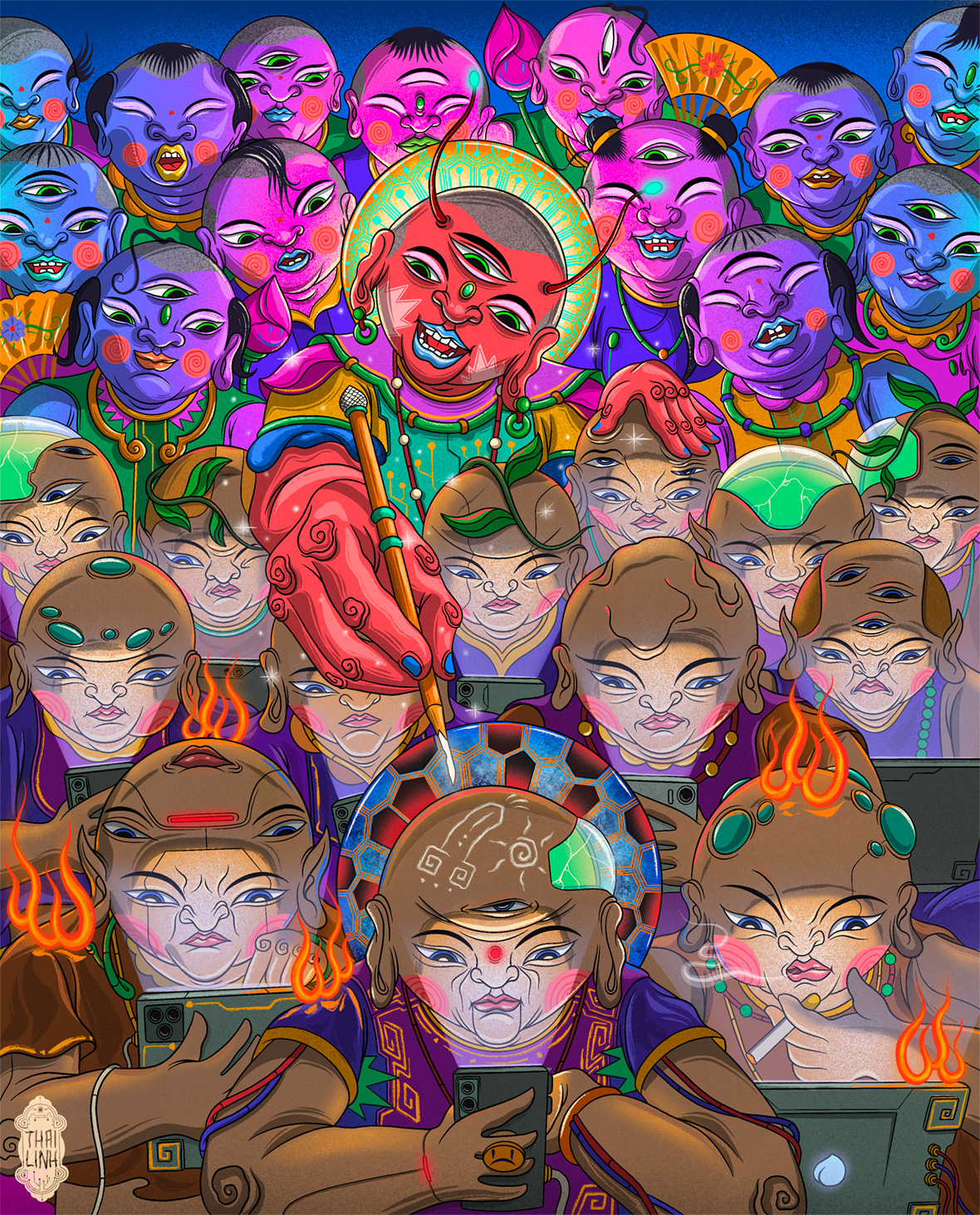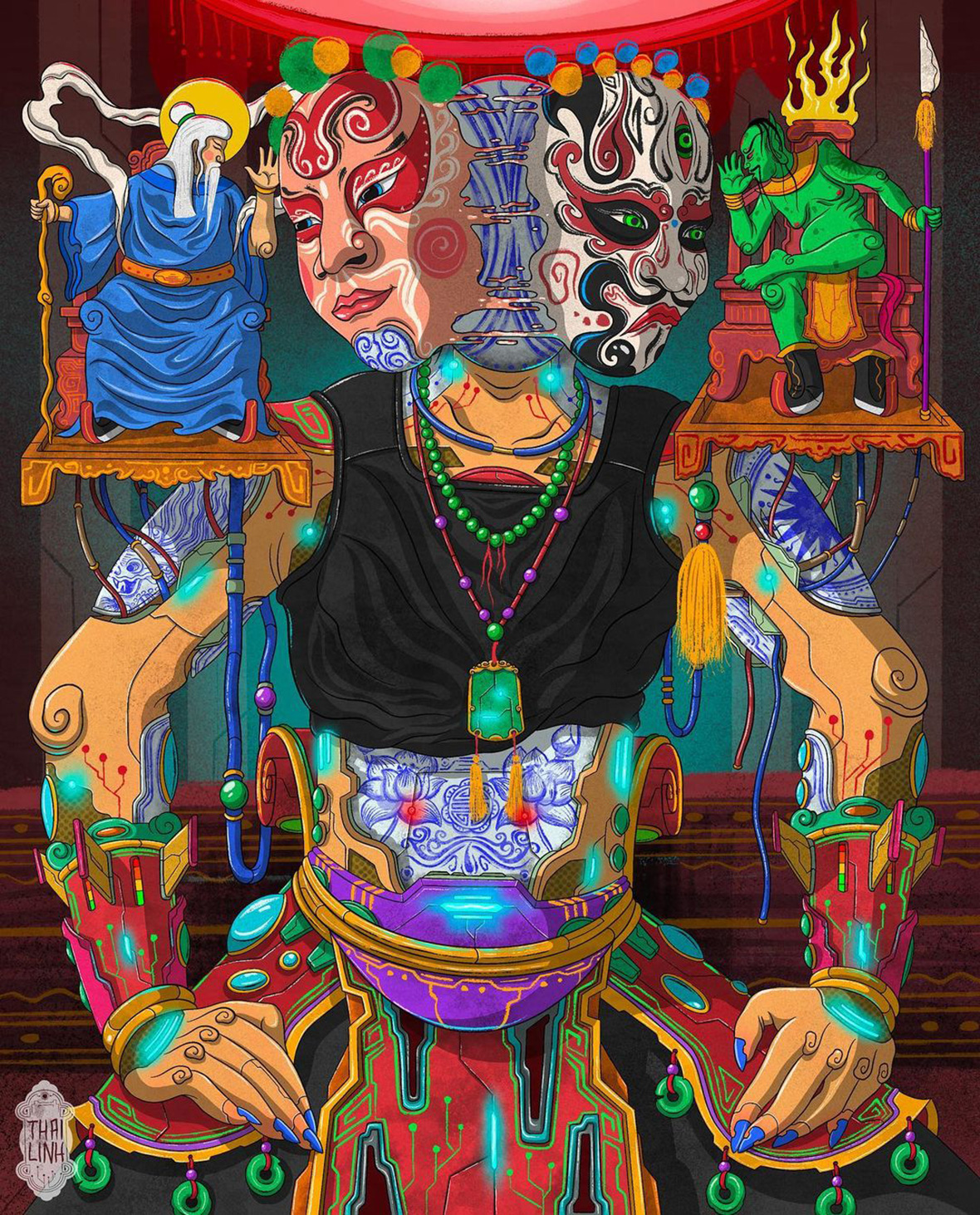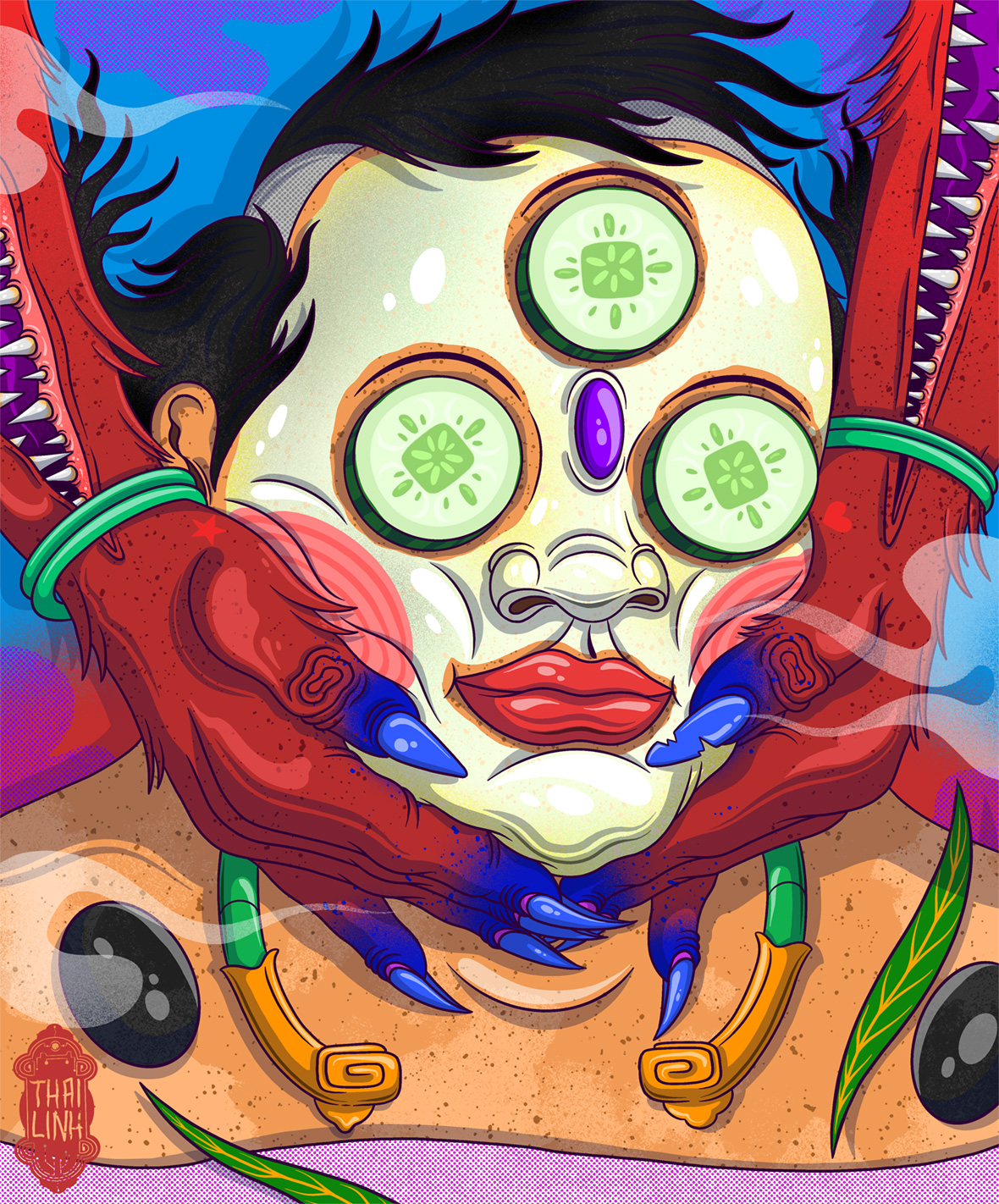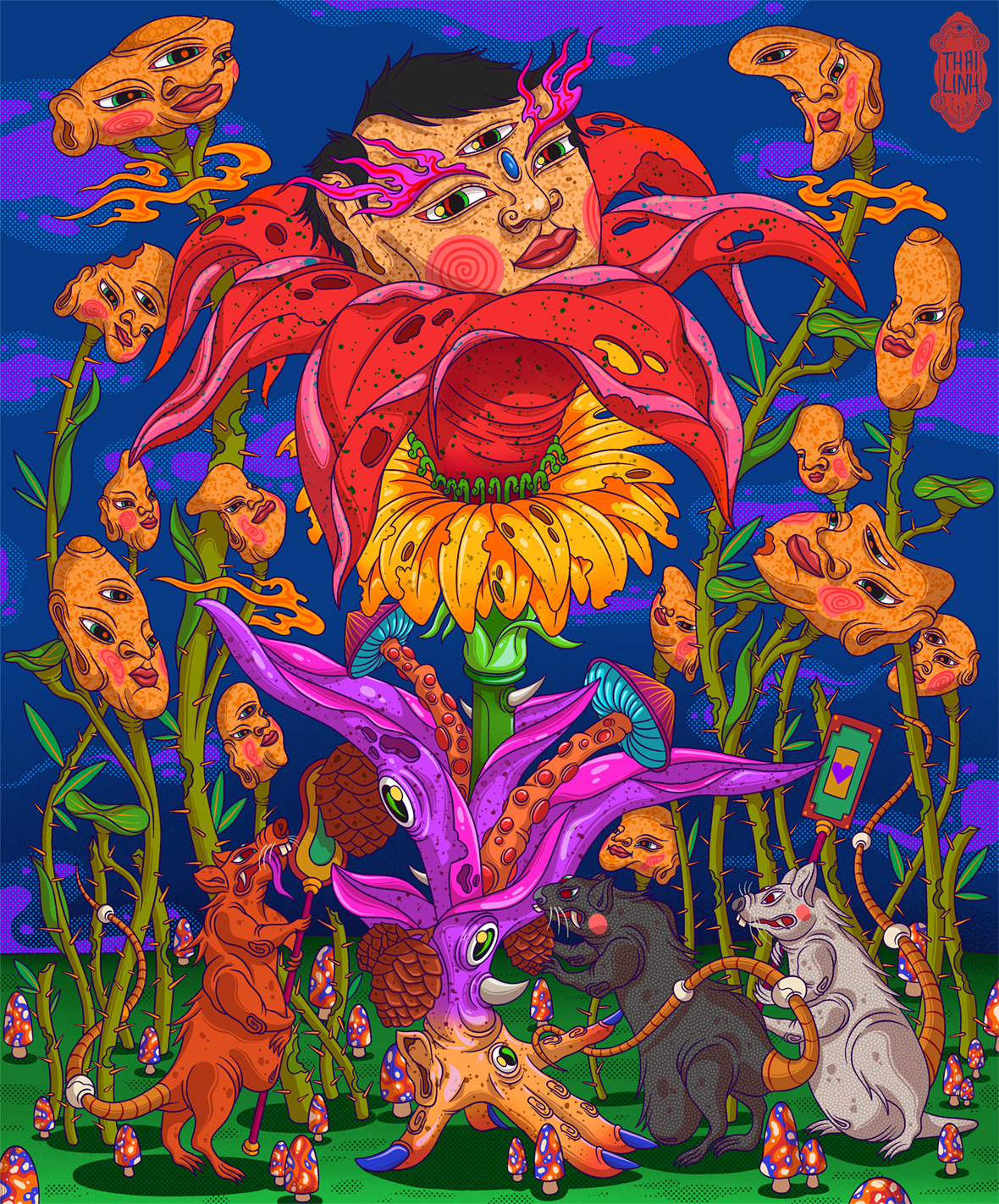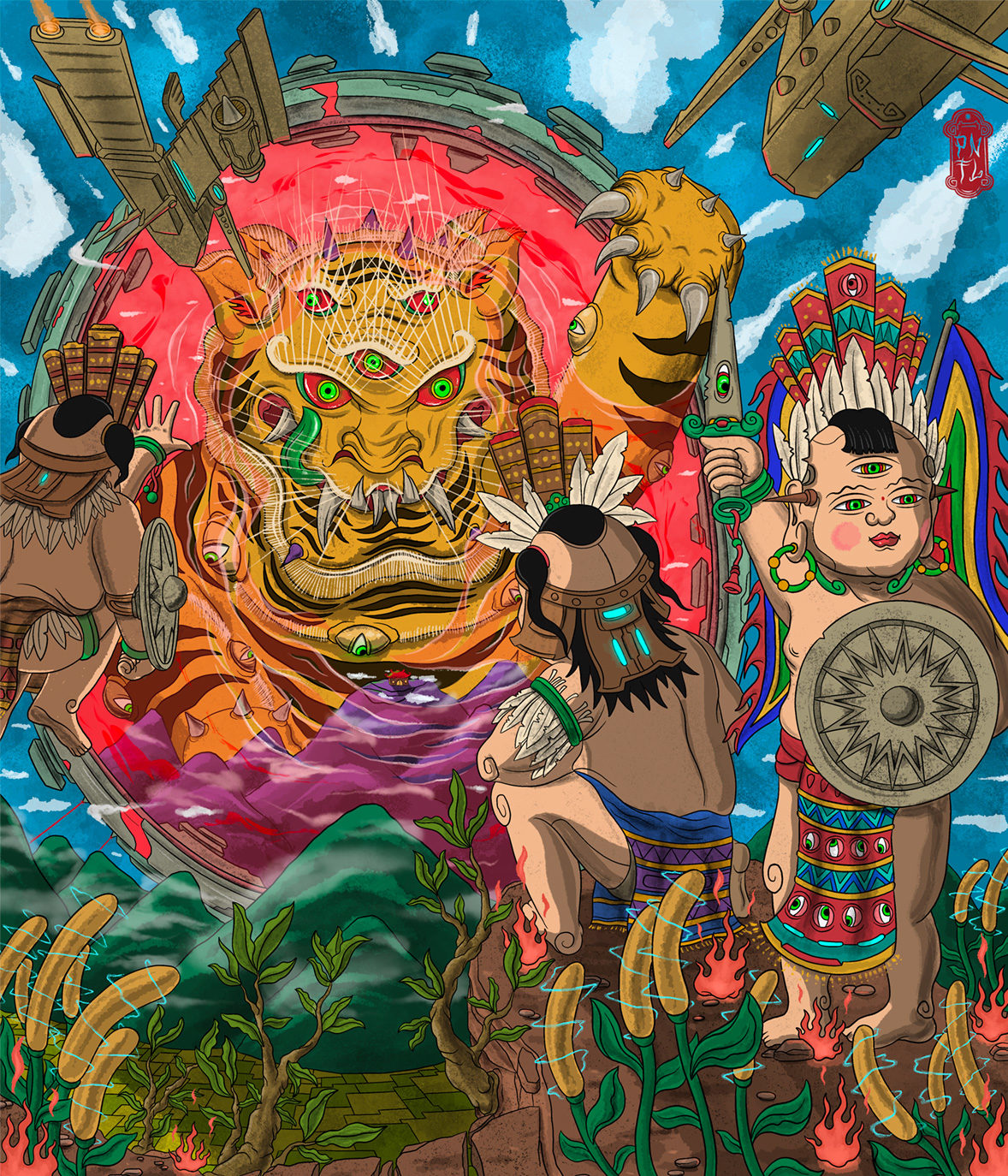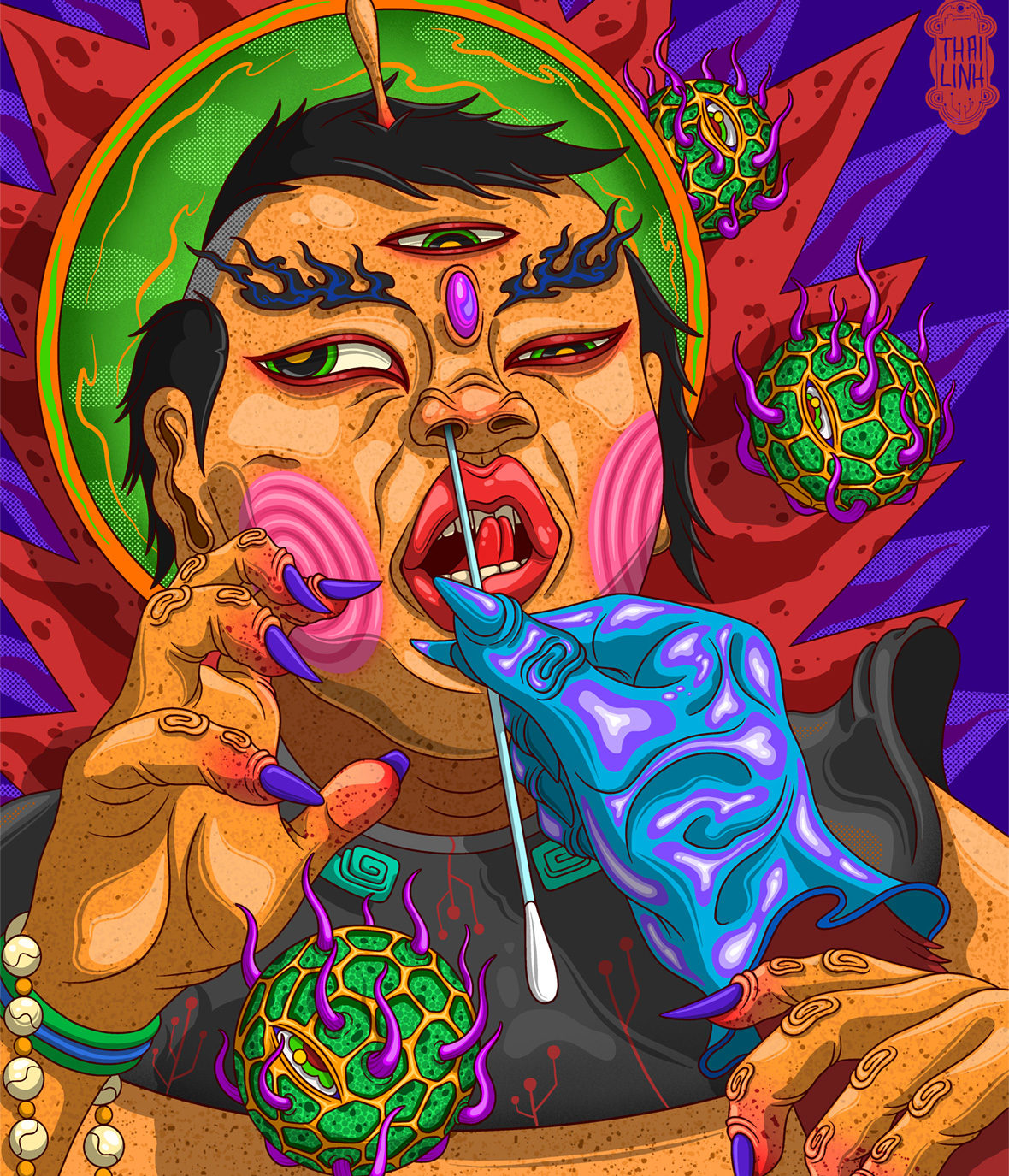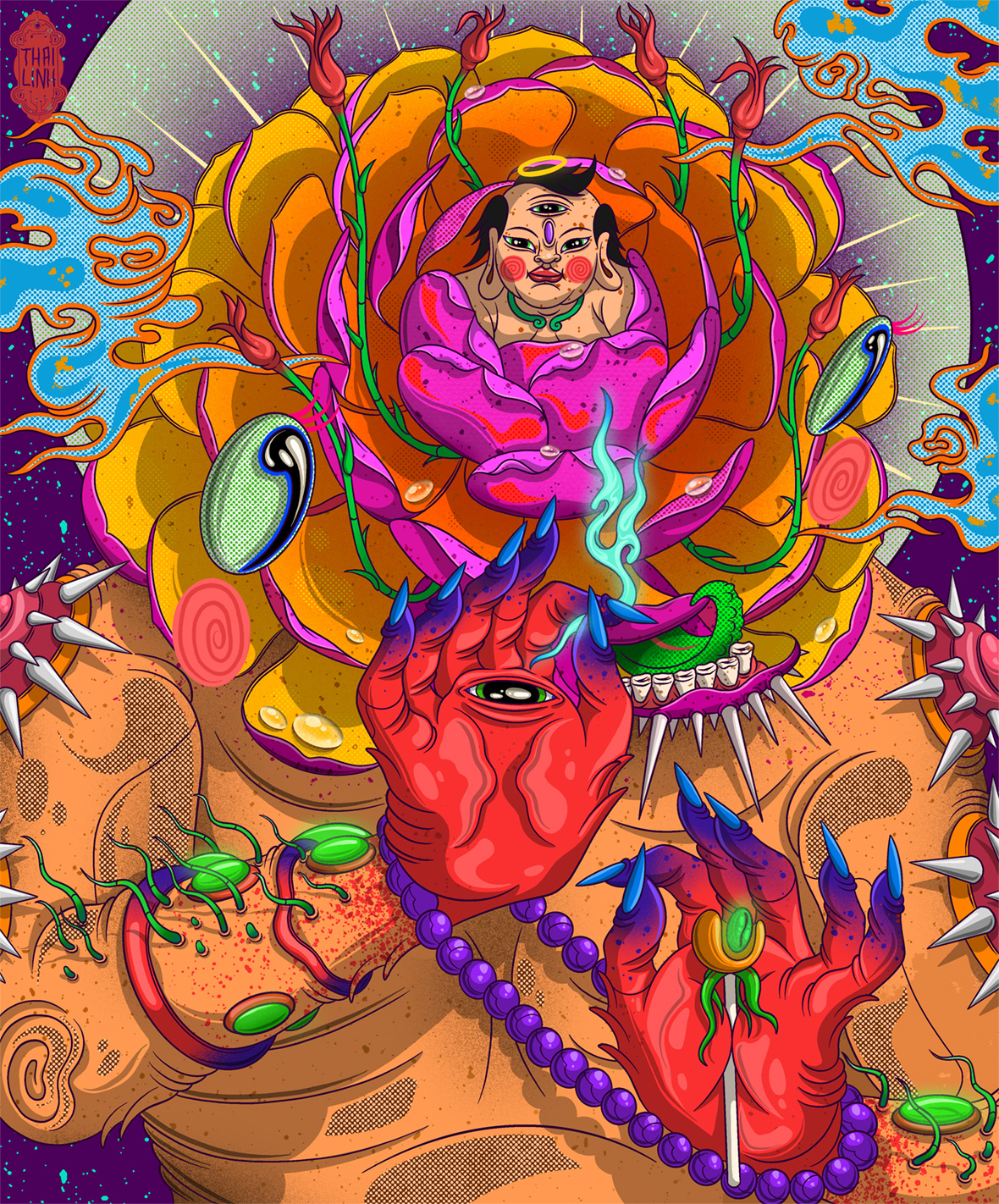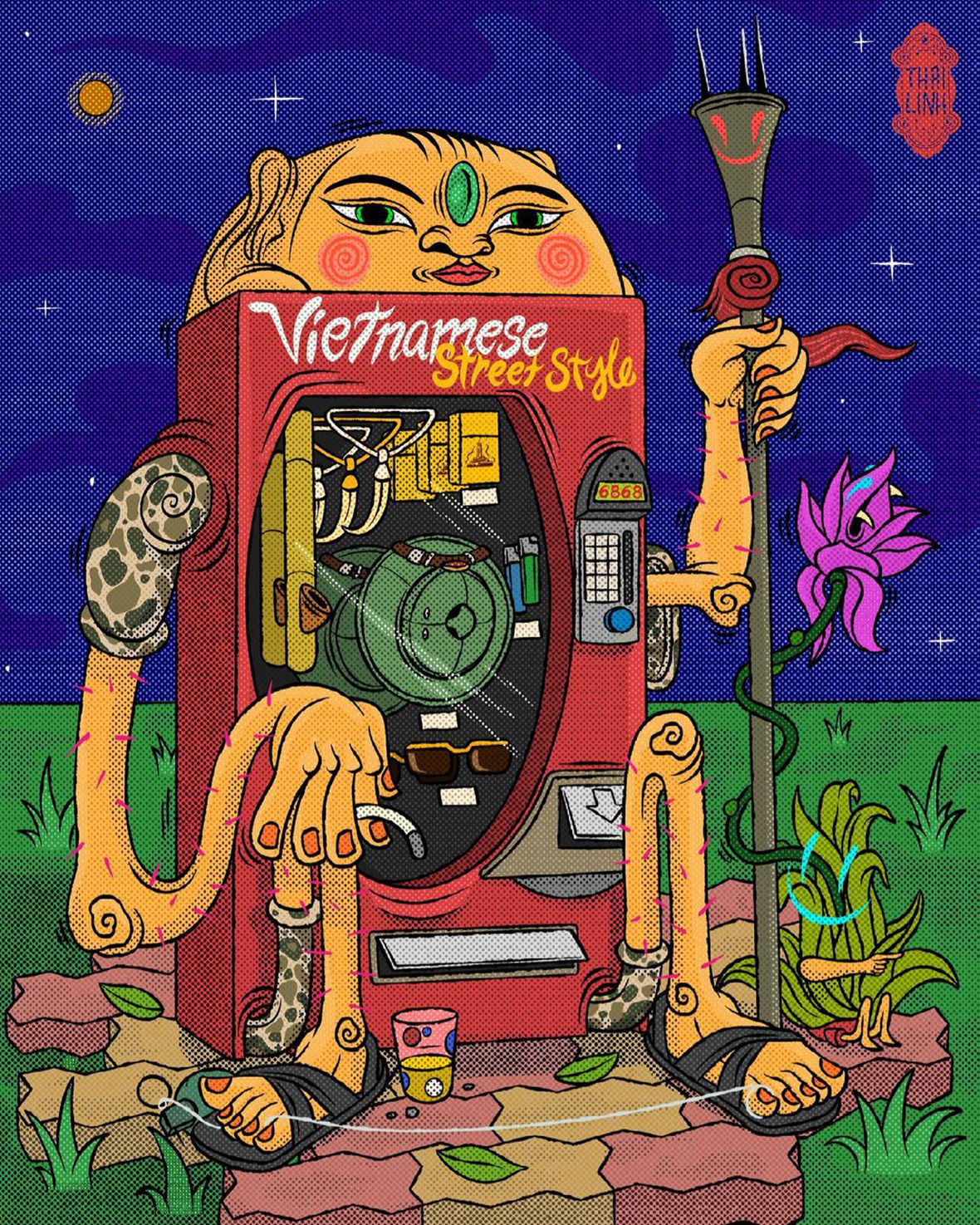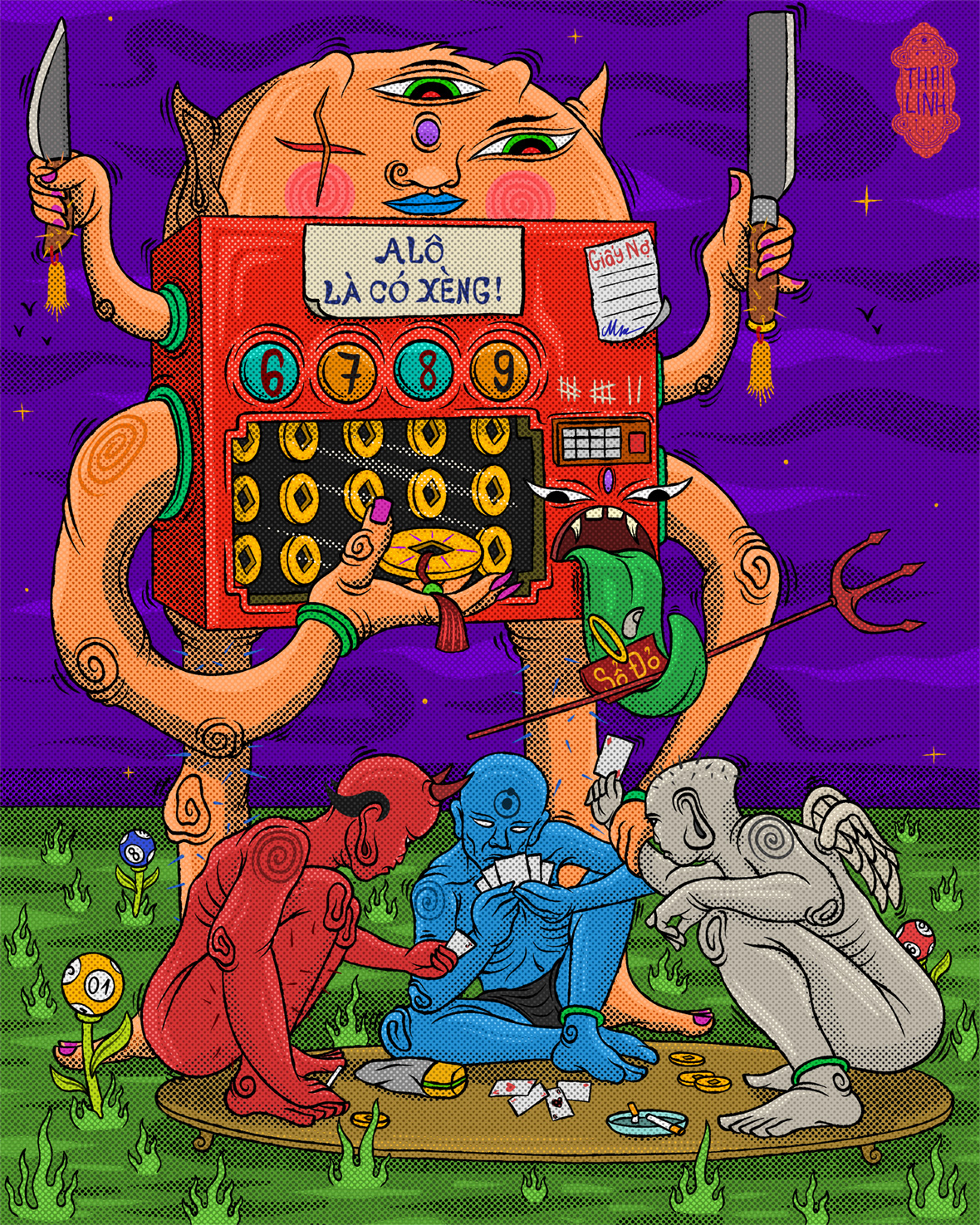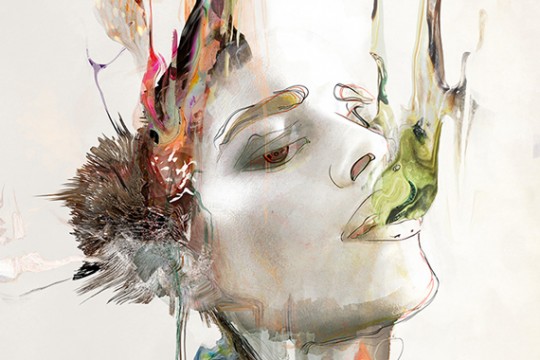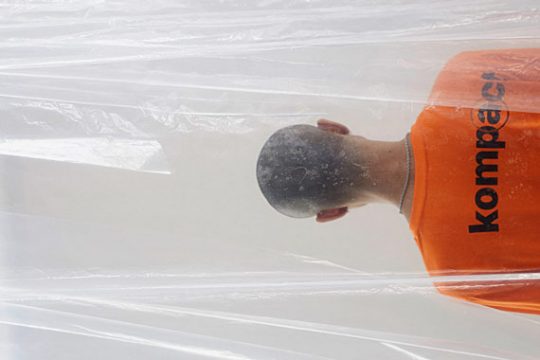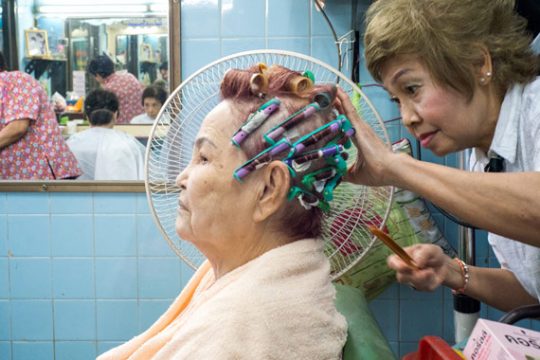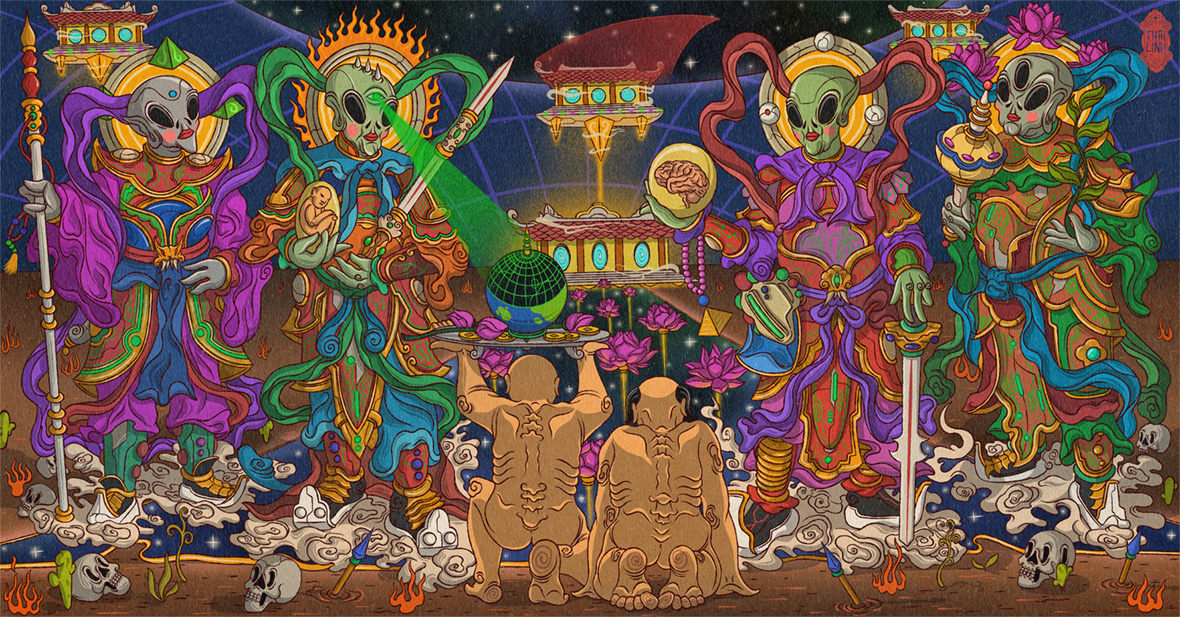
Phạm Ngọc Thái Linh is an artist who proves that humor is possible even when dealing with substantive issues. The Vietnamese illustrator likes to draw visual inspiration from diverse topics, ranging from local culture, science fiction, and religion. These motifs are often wielded as commentary about gambling addiction, war, and poverty. His narratives are all told through the eyes of animate vending machines, naughty deities drawing dicks on distracted students, and universe-traipsing aliens. Being that he’s a member of the Antiantiart collective and the cofounder of Nirvana Streetwear, these strange characters from his personal work often make cameos in both music videos and on clothing as well.
Born and raised in Hanoi, Thái Linh collects ideas from his daily life. Walking around the northern city, he’s been exposed to a deluge of ideas all mashed together: old school Chinese heritage mingles with Vietnamese folklore, Buddhist temples exist alongside indigenous peoples, and all of it crosses paths with global youth culture. These disparate influences are part of his everyday experiences.
He was also significantly inspired by his grandfather, a famous Viet painter named Phạm Lực who worked for the northern army during the American war. He even painted a live portrait of John Kerry, who at the time was the US Secretary of State. “He mostly painted the lives of everyday Vietnamese people during the war and in the post-war era as well,” Thái Linh says. “He managed to highlight the positivity within very difficult circumstances.”
Thái Linh 从小在河内长大,他平常喜欢从日常生活中收集灵感。这座北部城市拥有很多融合创意,例如古老的中国传统与越南民间传说掺杂在一起,佛教寺庙与原住民共存,所有这些又与青年文化交汇。每一天,他都沉浸其中。
此外,他的祖父 Phạm Lực 也对他有很深的影响。Lực 是越南著名的画家,曾在战争期间为北方军队工作,还曾在 2017 年给美国国务卿约翰·克里(John Kerry)画过肖像画。Thái Linh 说:“祖父的画主要是关于战时和战后越南百姓的日常生活。那是非常困难的时期,他仍努力在生活中挖掘积极的一面。”
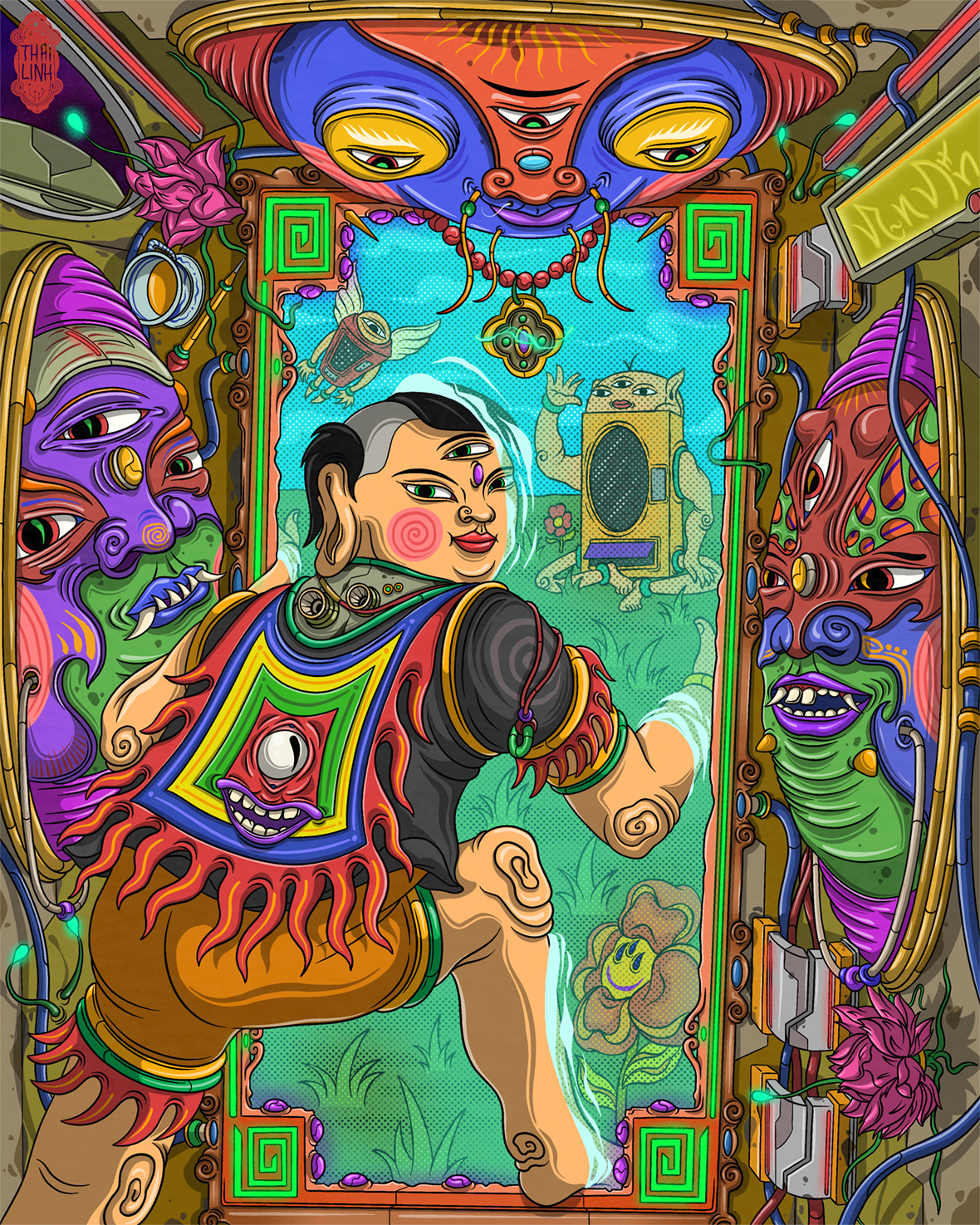
Thái Linh’s digital artwork is colorful and drawn in a comic style that plays off of his outlandish humor. But it doesn’t cancel out the depth in his work, whether that be exploring the personal dynamics of family or the hardships of the less privileged. “Everything comes together spontaneously without forcing anything, without any rule; this way of making art makes me feel comfortable and happy,” he explains. Topics of colonialism, COVID, and motherhood are told with a sarcastic flair as he sees fit. In one piece, an interstellar tiger lunges from a Stargate portal, attacking a group of tribal natives. In another, a humanoid getting a PCR test is swabbed so deep in his nose it pokes out of his skull. In yet another, an android mother donning ancient armor nurses a lion-headed baby in her glass womb.
Thái Linh 的色彩运用往往极为丰富,漫画式风格与他古怪的幽默相得益彰,但这并不会削弱其内容的深度,主题包括了探讨亲人之间的关系、亦或是展现弱势群体的难处等等。他解释道:“我的创作都是水到渠成,没有任何刻意而为,也没有任何规则限制;这种艺术创作方式让我感觉很自在。”他以略带讽刺的态度,讲述殖民主义、新冠疫情和母爱等话题。
Although the 25-year-old artist is Buddhist and often prayed at temples with his family, he doesn’t seem to hold an overwhelming reverence for the religion. In his work, Buddhist deities often appear as aliens or cyborgs. “I feel like whenever a disaster happens, people always try to find a reason to blame or pray to a high power, but won’t admit that it’s mainly humans’ fault,” Thái Linh says. From this perspective, there isn’t much difference between a deity and an alien. “I know that might not be faithful to religion, or even necessarily true, but the thought keeps me intrigued and creative.” A piece titled The Healing depicts this concept clearly. It’s an intricate drawing that features two men kneeling in front of giant cosmic overlords, presenting offerings of money, flowers, and earth itself.
如今,25 岁的 Thái Linh 还声称自己是一名佛教徒,经常与家人一起去寺庙祈祷,但对于宗教,他似乎并不会过分尊崇。在他的作品中,佛教神灵经常以外星人或生化电子人的形象出现。Thái Linh 说:“每当一些灾难发生时,人们总是把一切归咎于各种理由,或祈求上天保佑,却从不承认其实人类自己才是始作俑者。”从这个角度来看,神灵与外星生物并没有什么不一样。“我知道这样说对宗教来说是某种亵渎,但这种想法却激发了我创作上的好奇心。”在一副名为《The Healing》(疗愈)的作品中,他清楚阐述了这一概念,画中两个男人跪拜于宇宙霸主面前,他们双手献上金钱、鲜花和地球,来作为祭品。
The anamorphic vending machines that populate Thái Linh’s work are meant to represent how the convenience of the modern world can enable our bad decisions. Angry? Go right out and buy a weapon. Need a risky loan? Someone will be happy to oblige. He’s used these same characters to offer takes on the American war as well, depicting DC Comics’ Dr. Manhattan playing cards with the devil and an angel. Towering above them is a loan-sharking vending machine filled with gold coins. The piece was inspired by his discomfort with a scene in the Watchmen movie where Dr. Manhattan kills hundreds of Vietnamese without emotion. It made Thái Linh imagine what it would be like if Manhattan lived in his country. Both the devil and the angel are losing badly to him, pawning their trident and halo—the angel has even chopped a finger off for collateral.
除此之外,Thái Linh’ 还喜欢运用变形的自动售货机,旨在揭示现代社会的便利如何导致人们作出各种错误的判断:觉得受了点委屈就想用枪来解决、即使再穷也有人给你放高利贷等等。除此之外,他还通过这些角色来探讨美国发起的战争,其中就有 DC 漫画的曼哈顿博士与魔鬼和天使打牌的场面,一台装满金币的高利贷自动售货机在身后暗中观察,看起来十分危险。作品的灵感来自《守望者》电影中让他毛骨悚然的一幕:曼哈顿博士面不改色、心不跳地瞬间杀死了数百名越南百姓。
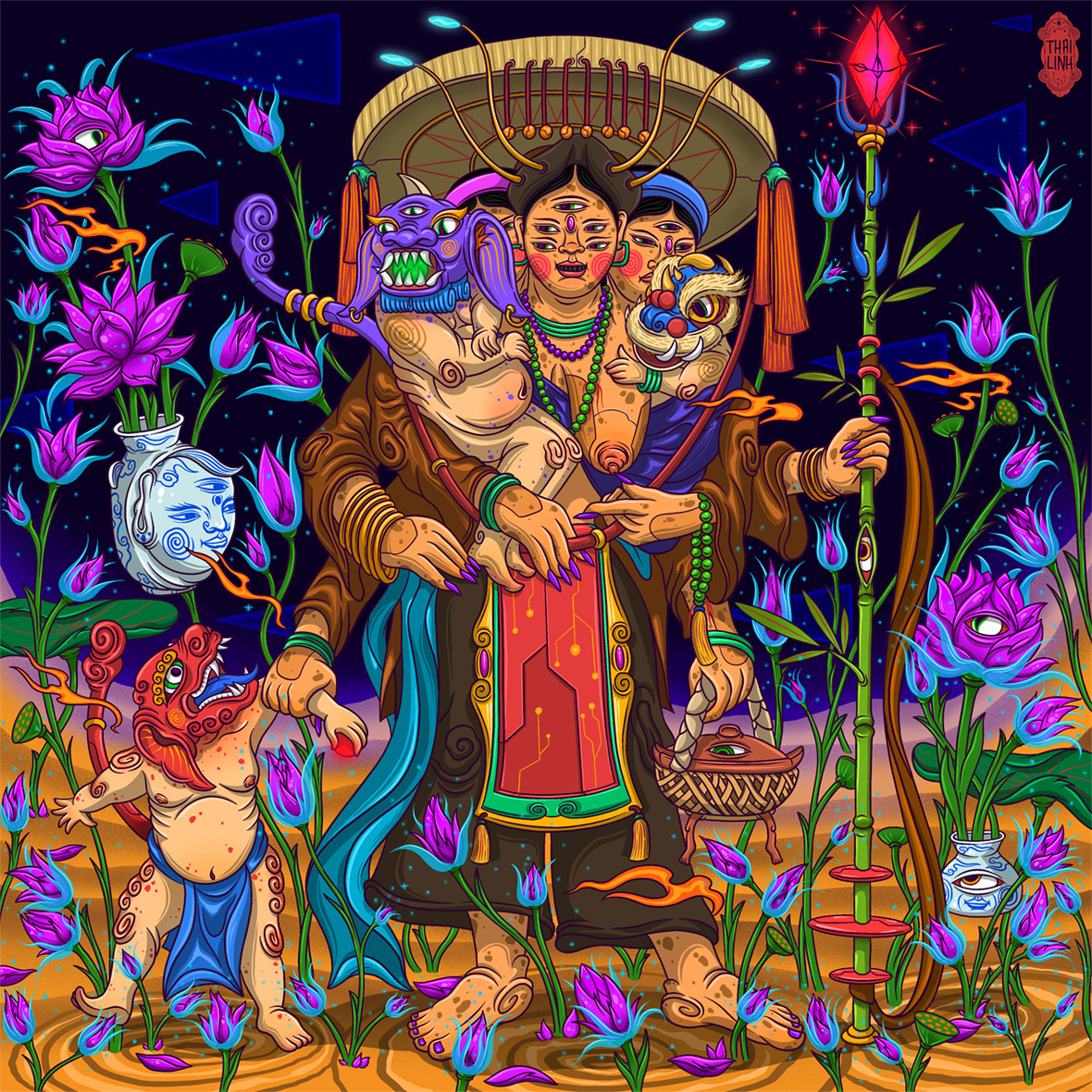
Hustling Mom exemplifies an attention to his roots. It depicts a woman with multiple eyes, heads, arms, and antennae, dressed in a nón lá (or cone hat) and other garments regularly worn by Northern women in the countryside around wartime. She’s shown caring for her many alien children while also tending a moon farm. “There’s a Vietnamese saying: ‘Ba dau sau tay,’ which translates to ‘three heads and six arms,’” he says. “It’s meant to capture how much work Vietnamese women have to do on a daily basis. Especially during the war, women had to take care of their babies, do housework, do labor work, and help the war efforts all at the same time.”
Thái Linh says he enjoys offering a contemporary take on these different Vietnamese traditions and customs through his illustrations, but he understands that he’s only scratching the surface: “My artwork only represents a small part of the long-lived culture of Vietnam.”
另一幅作品《Hustling Mom》(忙不迭的母亲)则体现了 Linh 对自身文化根源的重视。画中描绘了一个长着多头、多手、多触角的女性,她佩戴一顶圆锥形的越南斗笠,身穿战时北方农村妇女服饰,一边照料怀中的孩子,一边打理月球农场。Thái Linh 说:“越南有一句俗话叫 ‘Ba dau sau tay’,意思是三头六臂,形容很忙碌的样子。这幅作品旨在体现越南女性每天繁重的工作量,尤其是在战争期间,她们既要照顾孩子、做家务、做体力活,甚至同时还要打仗。”
能通过自己的插图,对各种越南传统进行当代的重译,Thái Linh 表示很开心。但他知道自己的作品顶多只够得上文化的一点皮毛:“别看这些色彩和轮廓有多丰富,其实也只是越南悠久文化中很小的一抹而已。”
Like our stories? Follow us on Facebook and Instagram.
Instagram: @pnthailinh
Contributor: Mike Steyels
Chinese Translation: Olivia Li

